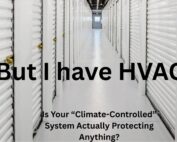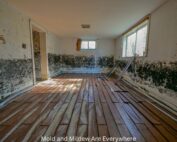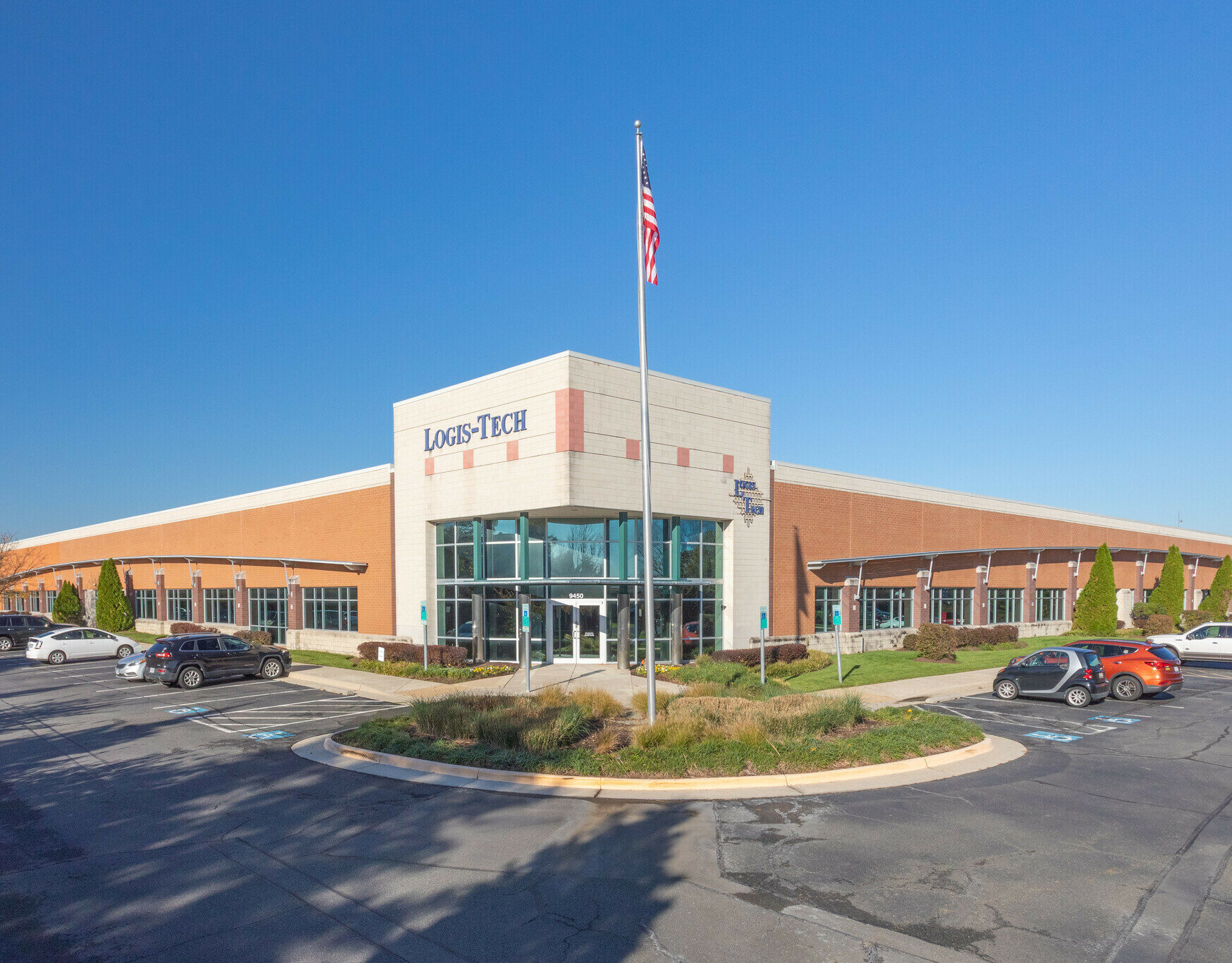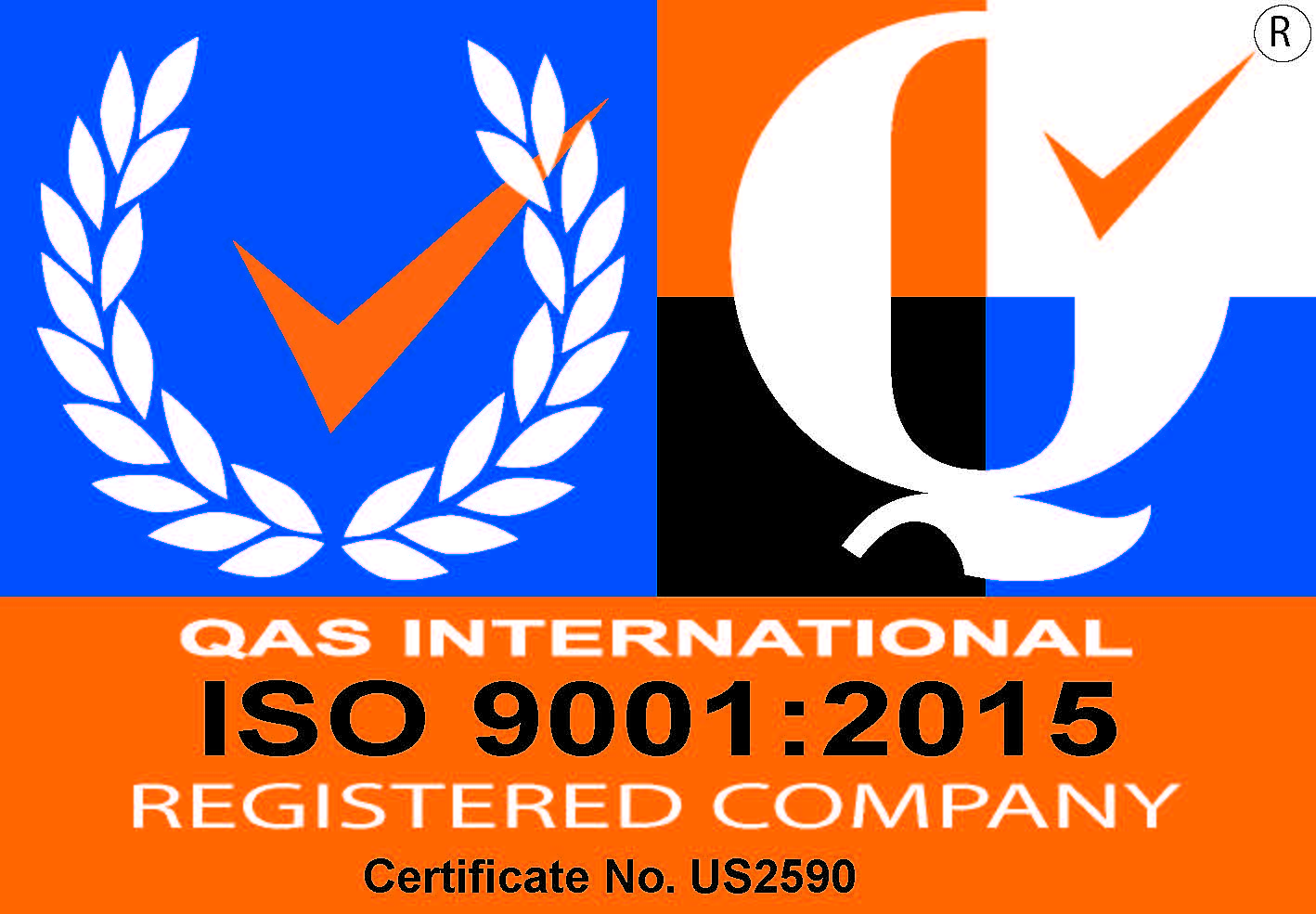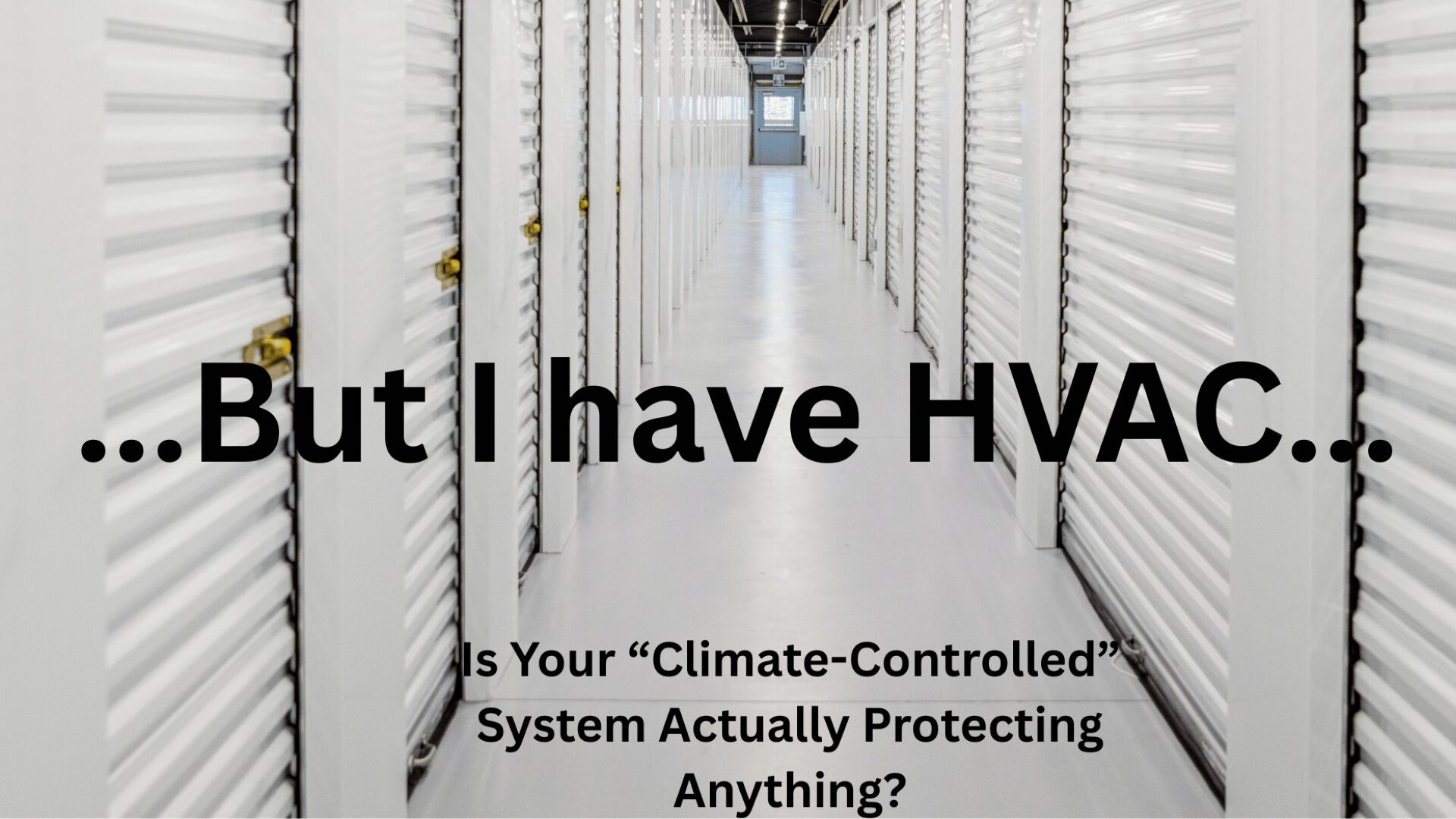
Is Your “Climate-Controlled” Storage Actually Protecting Anything?
Let’s clear something up.
Most facilities claiming “climate control” are only controlling temperature. That’s like wearing a raincoat with holes and calling it waterproof.
Humidity is the real threat.
-
Mold starts growing once relative humidity (RH) exceeds55%—but damage to stored items begins as low as 45% RH.
-
A traditional HVAC system alone can’t manage RH year-round—especially in shoulder seasons when cooling cycles are minimal.
-
In many US regions, like the Southeast or Midwest, dew points regularly push RH past safe limits, even if the temperature is “comfortable.”
📉 That means your customer’s leather couch, electronics, paper files, and gradma’s clothing all at risk?
They’re soaking in a microclimate perfect for mildew. pest infestation and corrosion.
Let’s Get Real About Climate Control
Merriam-Webster defines climate control as:
“Artificial control of air movement, temperature, and humidity.”
And ASHRAE—the gold standard in HVAC design—sets precise indoor environmental standards (even if they focus on occupied buildings).
So why is the self-storage industry still pretending air conditioning alone is enough?
Because no one’s holding us accountable. Yet.
What Smart Owners Are Doing Differently
✅ They’re installing standalone dehumidifiers alongside HVAC—not relying on AC to pull double duty
✅ They’re setting realistic temps: 80–85°F, not overcooling for “comfort” in an unoccupied space
✅ They’re sealing and insulating based on IECC (International Energy Code) requirements
✅ They’re educating tenants and building reputation protection from the ground up
And yes—they’re charging a premium for it.
Ready to Build It Right?
Don’t let “climate control” be just a buzzword on your website.
📞 Call 800-974-9771 and ask for Brian
📧 Or email information@logis-tech.com
Let’s talk through your project and design a system that protects your tenants—and your bottom line.

